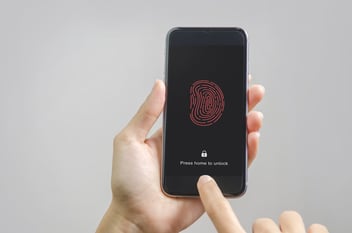Addressing print security is a must in 2023 and 2024. For companies to thrive in today’s uncertain times, they must develop resilience. The digital revolution has brought a new high to data availability and scale of connectivity while accelerating decision-making everywhere.
With it, comes a promise of vast digital opportunity, but also significant security challenges. Without proper security, this transformation comes with the potential for large-scale failure and security risks, together with a waterfall of consequences if security threats are not properly mitigated.
In total, eight cyber security trends and predictions will define 2024. Weaponizing privacy, adopting zero-trust programs and human-centric security design, sophisticated demands, pandemic repercussions, and more paint a picture of the shifting future of CISOs and IT/security teams.
Where remote work used to be the big security nightmare (concerns inherent to a flexible approach to work, like data breaches, document security, and printing systems presenting a serious point of attack for businesses), technology enhancements are posing new risks and opportunities to keep IT infrastructure protected.
In this article, we’ll delve into the role of printing infrastructure in IT security and the cyber security trends defining 2023-2024. These trends were adapted from Gartner’s 2023 Security & Risk Management Summit as well as Quocirca’s 2023 Print Security Landscape Report.
Prediction #1. CISO's will Adopt Human-Centric Security Design
As humans, we often do reckless things, knowingly, if they are more tailored to our every day. In Gartner’s research, we learn that 90% of employees who admitted undertaking a range of unsecure actions during work activities knew that their actions could increase risk to the organization. That’s why human-centric security design becomes necessary.
A human-centric security design is modeled from the behavior of the user rather than from the technology, threat, or location. As per Gartner’s forecast, 50% of CISOs aim to adopt human-centric design practices into their security systems.
Prediction #2. Stand-Out Privacy Protection will Become Pivotal
Organizations are starting to realize that a privacy program can enable them to leverage data more broadly. It also allows them to differentiate from the competition, and build newfound trust with customers, partners, investors, and regulators.
With customers, both privately and professionally, seeking better privacy protection (83% of netizens worldwide aim to take more action to benefit from online privacy protection in 2022), it’s clear that state-of-the-art privacy safekeeping will become pivotal. In fact, 97% of companies enjoyed benefits such as a competitive edge or investor appeal from their investment into privacy protection at the end of 2022-mid 2023.
Privacy protection is key–and solutions in the cloud offer (to some, surprisingly) a vast security blanket that covers users, business data, and growth opportunities–from start to finish. Taking SAFEQ Cloud as the example, here are a few ways it keeps users and data safe:
- MFA, cloud authentication, and single sign-on (SSO)
- Pull printing capabilities
- Configurable end-to-end data encryption
- Incident Management and Major Incident Management Procedure
- Data separation
- Zero trust architecture
Prediction #3. Large Enterprises will Integrate Mature and Measurable Zero-Trust Programs
The zero-trust realm is becoming unavoidable, and for good reason. Gartner forecasts that 10% of large enterprises will have comprehensive, mature, and measurable zero-trust programs established by 2026. An increasing number of organizations are adopting the zero-trust framework for their business technologies, and printing is vital to that.
In a survey by Okta, we see that 55% of surveyed organizations (all sizes) have a zero-trust initiative in place. Of those who don’t, 97% plan to formulate one in the next 12 to 18 months.
Zero trust printing helps IT teams mitigate risks associated with printers and keeps user identity at the heart of security and threat prevention strategies. Here’s how:
- Minimized threat surface on your print environment
- Full visibility into all network user activity
- Maximized authority of authentication (and access control)
- Limited risks of information exfiltration
- Higher protection against printer vulnerabilities
- Less reliance on manual threat activity prevention
Prediction #4. Organizations will Struggle to Keep up with Print Security Demands
Turning to Quocirca’s 2023 Print Security Landscape report, 39% of responders share that keeping up with print security demands is becoming harder, rising to 50% in the midmarket (500–999 employees). According to the report, the main security challenges include:
- Ensuring print management software is up to date (35%)
- Protecting sensitive and confidential records from being printed (34%)
- Securing printing in the remote/home environment (31%)
To account for these types of cyber security trends (predictions 4 and 5), companies like Y Soft are rethinking their delivery models to remove the burden of security management for CSOs, CIOs, security admins, and IT teams. With SAFEQ Cloud, we can take proper preventative measures, releasing monthly security updates (I.e., always up to date), conducting regular penetration tests, and frequently performing vulnerability scanning for the entire infrastructure, regardless of locations.
With print roaming (pull printing) and print authentication (like Auth0 authorization or PingID), a SAFEQ Cloud system within your IT infrastructure ensures no confidential documents or sensitive information are printed before the user authenticates at the printer.
Prediction #5. Self-Directed Cyber Risk Quantification Efforts Will Likely Fail
According to Gartner, by 2025, 50% of cybersecurity leaders will have tried, and failed, to use cyber risk quantification (CRQ) to drive corporate decision-making. Their research reveals that no more than 36% have achieved actionable results, including reducing risk, saving money, or gaining decision influence.
The key to successful cyber risk quantification is focusing all firepower on the quantifications that decision-makers ask for. Security and risk management (SRM) leaders are facing more and more board scrutiny and executive demand for cybersecurity services.
Rather than producing self-directed research that they then have to force the business to care about, they can focus on using CRQ projects to communicate the risks that address demands from key decision-makers.
That said, Gartner also predicts that 70% of boards will include a member with cybersecurity expertise by 2026, which means that more influence is on the horizon.
Prediction #6. Cybersecurity Incidents Will Continue to Rise
Overall, 42% of organizations reported an IT security breach in the past year. On average, every year sees a total of 800,000 cyber-attacks. The highest incidence across all organizations is malware, with phishing highest in the mid-market. In general, 27% of IT security incidents are related to paper documents.
Surprisingly, a survey from Digital.com found that only 51% of surveyed SMBs currently have measures in place to protect them from cyberattacks.
The continually accelerated distributed workforce, sometimes referred to as an “Everywhere Enterprise Strategy” (an approach to work ensures that workers aren’t bound by proximity or physical space. All that is required is an internet connection and workspace.), offers many advantages. However, one considerable disadvantage is a widened attack surface.
Security training for employees remains a viable way to educate printer operators on print vulnerabilities and document security. Yet, it has become more difficult for IT teams to closely monitor print activity, document security, and endpoint security.
The main reason for this is the increase in Bring Your Own Device (BYOD) policies that allow remote workers to engage their personal printers in work tasks.
This means that IT leaders have had to find creative ways to protect their companies from security breaches. This often involves the use of integrated secure print services that allow devices to be managed across various locations. While security measures such as requiring the use of identity cards can be helpful, it’s hard to rely on a system that uses a personal ID when most of your workforce is remote.
Prediction #7. Companies Need to Take a Layered, not Singular, Approach to Print Security
While adopting a Managed Print Service (MPS) is a great way to negate the risks associated with printing, many organizations will find that they need to arm their print services from different angles. Often called a “multi-layered approach” to print security, this involves technology suppliers adapting several different security mechanisms to protect against the risks of hybrid work, treat landscapes, and sophisticated hacking.
Here’s a look at some of the security mechanisms that help safeguard a cloud print environment:
→ 10 Ways to Maintain a Secure Cloud Print Environment
While adopting frequent reporting and analysis of print systems can be effective, many organizations who are serious about offering security features will have to go so far as to adopt a zero-trust approach to printing.
At Y Soft, we are not only in compliance with ISO 27001:2014. Our native-cloud solution, SAFEQ Cloud, is in compliance with the Cloud Security Association (CAIQ), SOC-2 trust principles, and OWASP. We operate under the Zero Trust principle using the broadest range of on-prem and cloud authentication methods, end-to-end encryption of data (in transit and at rest), and much more.
Some of the most powerful lines of defense that would be at home in a multi-layered approach to print security include secure pull printing, BYOD policies, regular in-depth risk assessments, and strategic (frequent) prevention activities.
Prediction #8. Customers will Expect Significantly Improved Security Capabilities from Their Print Suppliers
Currently, only 32% of customers consider themselves ‘very satisfied’ with their print supplier’s security capabilities. Similar to prediction 2, customers will be counting on their technology vendors to deliver enhanced security to their IT infrastructure systems. With a global average data breach cost of $4.45 million, that makes a lot of sense.
Customers who leverage MPS solutions already indicate a higher level of satisfaction (39% are very satisfied) than those not currently using an MPS or with no intention to use one (23%).
The overall number is still distinctively low, even for MFPs–and actually, there are four ways that MFPs can pose a security risk within a business if not properly maintained:
- Compromised credentials or outdated software can provide unauthorized access to your MFP devices.
- MFPs can be used in distributed-denial-of-service (DDoS) attacks.
- Unauthorized individuals could gain access to the MFP settings and modify the device. Such actions could lead to scenarios where, for instance, scanned files are sent via email to cyber attackers.
- Unclaimed printouts may be left on the printer tray, posing an information security risk because unauthorized users can simply pick up the pages.
As customers expect increasingly improved security capabilities, they are looking to the cloud for answers. “We're starting to see those markets that were cloud resistant become very cloud positive now.” - Paul Birkett of HP.
This becomes even truer post-pandemic as distributed workforces are becoming the norm. “In 2019, we had defense customers saying 'everything has to be on-premise–servers only, nothing in the cloud'. Come April 2020, that same defense customer is saying 'we want a cloud print solution. we need to get rid of our servers, we need to support our distributed workforce.” - Alastair MacKay of Ricoh.
How SAFEQ Cloud Mitigates Print Security Risk
If a powerful line of defense seems like a hefty undertaking for your IT team, help is available to you. By relying on a cloud printing solution like SAFEQ Cloud, you can alleviate the burden on your IT teams so you can enjoy the peace of mind that comes with operating a well-protected print infrastructure.
SAFEQ Cloud provides constant monitoring of your print system, ensuring that your systems are always up-to-date, and your documents and sensitive data are always protected. If you’re in the process of optimizing your print infrastructure to protect against the dangers of operating in a remote environment in the modern world, SAFEQ Cloud is a great place to start.
FAQs on Print Security
Q1) Can you be Hacked Through your Printer?
Commercial and privately owned printers can get hacked both physically and remotely. With access through an unprotected Wifi connection, hackers and ransomware attackers can make unauthorized changes to settings that allow them inside the hardware where they can launch DOS (Denial of Service) attacks, upload malware, send malicious data, or install ransomware.
Printers have vulnerabilities that hackers can exploit. However, with MPS and proper software security systems, you can prevent attacks and keep your devices and data safe.
Q2) Are Printers a Security Risk?
Printers can pose a security risk, however, it’s by no means inevitable. As mentioned in the article, there is an extended attack surface with online printers, even more so with hybrid work and BYOD. With adequate print security hygiene and advanced protection measures (zero-trust, encryption, etc.), businesses’ print infrastructure can become resilient and all-out protected, for both data and users respectively.
Final Points
With your frequent questions answered, that concludes our rundown of print security trends for 2024.
Printers’ increasingly connected status means securing them should be a priority for any IT admin. Addressing the predictions above and setting your print infrastructure up for cyber security success is an inevitable process for any hybrid office not wanting to risk data leakage or print vulnerabilities crashing their print ecosystem, even temporarily.
While bumping into new security challenges seems inevitable, supplier-managed solutions help ensure your IT environment is always up-to-date, properly scanned for vulnerabilities, and enhanced with new security mechanisms as soon as they hit the market.
We hope these critical cyber security trends and predictions will help you elevate and secure your print infrastructure and management strategy.
Curious to learn more about how cloud technology helps ensure a secure print ecosystem for your business? Looking to leverage the cloud, but not sure where to start or what considerations need to be made? Check out our blog post about major considerations for migrating from server to cloud.





